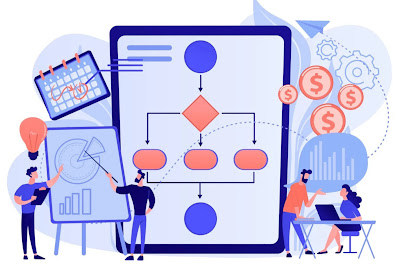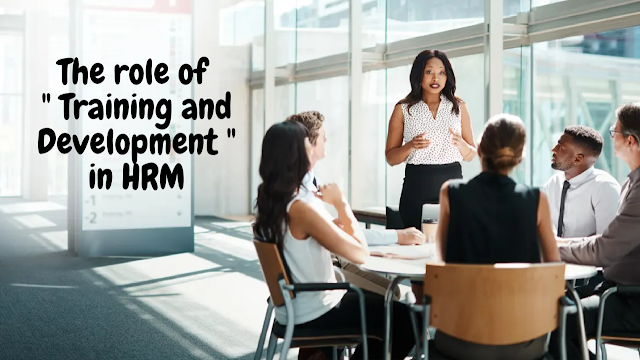The Relationship Between HRM and Design of Work
What is Job Design???
In today’s competitive business environment, organizations must strategically
manage their workforce to achieve efficiency and productivity. Two critical
components in this process are Human Resource Management (HRM) and Work
Design. While HRM focuses on recruiting, training, and retaining employees,
work design ensures that jobs are structured effectively to optimize
performance and employee well-being. This article explores the intricate
relationship between HRM and work design and highlights the advantages of
integrating both for organizational success.
Understanding
HRM and Work Design
Human
Resource Management (HRM)
HRM is the
strategic approach to managing people within an organization to maximize their
performance and align their efforts with business goals. Key functions of HRM
include:
- Recruitment and Selection: Hiring the right
talent to meet job requirements.
- Training and Development: Enhancing employee
skills for better performance.
- Performance Management: Monitoring and
evaluating employee productivity.
- Compensation and Benefits: Providing fair
remuneration to motivate employees.
- Employee Relations: Ensuring a positive work
environment and resolving workplace conflicts.
Design of Work
Design of work refers to structuring jobs and responsibilities to enhance efficiency, job
satisfaction, and employee well-being. It involves:
- Job Analysis: Identifying the tasks and
requirements of a role.
- Job Enrichment: Adding variety and
meaningful tasks to enhance motivation.
- Job Rotation: Shifting employees between
tasks to reduce monotony.
- Ergonomics: Designing workspaces that
promote comfort and productivity.
|
HRM Function |
Impact on Work Design |
|
HRM Shapes Work Design |
HR professionals develop job roles that align with organizational
objectives. They ensure that employees have clear responsibilities, proper
resources, and a conducive work environment. |
|
Work Design Influences HRM Functions |
The structure of work affects recruitment, training, and performance
management. Well-designed jobs attract top talent, reduce turnover, and
enhance employee engagement. |
|
Enhancing Employee Experience |
A well-designed job, supported by effective HRM policies, leads to
higher job satisfaction, motivation, and reduced workplace stress. |
|
Enhancing Employee Experience |
A well-designed job, supported by effective HRM policies, leads to
higher job satisfaction, motivation, and reduced workplace stress. |
|
Adaptability and Innovation |
Organizations that integrate HRM with dynamic work design strategies
can better respond to market changes and technological advancements |
- Increased Productivity: Employees perform
better when their roles are structured effectively.
- Higher Employee Engagement: Meaningful and
well-defined work enhances job satisfaction and commitment.
- Reduced Turnover Rates: Employees are less
likely to leave when their jobs are fulfilling and well-managed.
- Enhanced Workplace Flexibility:
Organizations can adapt to changes by continuously refining work design.
- Improved Organizational Performance: A
well-integrated HRM and work design strategy contributes to long-term
success and growth.
Conclusion
HRM and work design are essential for fostering a productive and engaged
workforce. By aligning HR strategies with effective job structuring,
organizations can optimize performance, enhance employee satisfaction, and
ensure sustainable growth. As the workplace continues to evolve, companies that
integrate HRM and work design effectively will remain competitive and agile.
Reference
Parker,
S. K., Morgeson, F. P., & Johns, G. (2017). The SMART
model of work design: A higher-order structure to integrate work design and
self-determination theory. Human Resource Management, 56(4), 555-582
Work design: What kind of workforce do you need?





Job design refers to the process of structuring roles and responsibilities to improve employee satisfaction, productivity, and overall performance. By aligning tasks with individual strengths and organizational goals, job design helps create meaningful work experiences and fosters greater engagement. Great focus on this foundational HR concept.
ReplyDeleteOne of the most important responsibilities of every HRM department is to design accurate jobs. Unless the expected outcome of the organization could not be reached. You discuss well here about that HRM Responsibility.
ReplyDeleteAnother key element for the organization. If we do not have proper job design, the expected outcome will be far from fetch. It needs proper education and trained personnel to design the right job role that will lead you to the vision of the organization.
ReplyDeleteJob design is very important because this is the process which makes sure that the job remains updated and is relevant to the employee. The main objective here is to reduce dissatisfaction which comes while doing the job on daily basis.
ReplyDeleteHRM and work design are interconnected in shaping a productive and employee-friendly workplace. A well-structured work environment enhances efficiency, motivation, and job satisfaction, ultimately contributing to organizational success.
ReplyDeleteWork productivity & efficiency mostly depend on the design of work,
ReplyDeleteClearly explained good job.
Your article presents a compelling discussion on the interplay between Human Resource Management (HRM) and work design, effectively highlighting their importance in fostering productivity and employee well-being. However, while integrating HRM and work design is beneficial, it is essential to consider that job design should not only focus on efficiency but also on employee autonomy and intrinsic motivation (Hackman & Oldham, 1976). Overly structured roles may lead to rigidity, limiting employees' ability to innovate and adapt to dynamic business environments (Parker et al., 2017).
ReplyDeleteFurthermore, while job rotation and enrichment are valuable, they may not always be suitable for all roles, particularly highly specialized positions where deep expertise is required (Grant & Parker, 2009). Striking a balance between structured job design and flexibility can enhance engagement while allowing employees to develop skills in a meaningful way. A more holistic approach that integrates both structure and adaptability may yield the best results.
References
Hackman, J. R., & Oldham, G. R. (1976). Motivation through the design of work: Test of a theory. Organizational Behavior and Human Performance, 16(2), 250-279.
Parker, S. K., Van den Broeck, A., & Holman, D. (2017). Work design influences: A synthesis of multilevel factors that affect the design of jobs. Academy of Management Annals, 11(1), 267-308.
Grant, A. M., & Parker, S. K. (2009). Redesigning work design theories: The rise of relational and proactive perspectives. Academy of Management Annals, 3(1), 317-375.